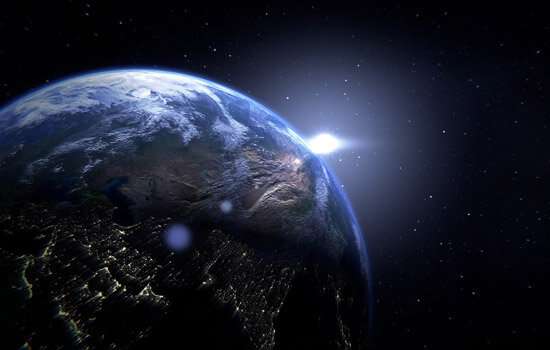Study sheds new light on how the Earth's crust was formed

A new international study led by a Monash geoscientist has found that more crust was formed on the early Earth than previously thought.
The study, published today in Nature GeoScience, is part of the Monash "Pulse of the Earth' research project and has major has implications for the rate of crustal growth in Earth's earliest times and the evolution of global tectonics.
The Australian Research Council (ARC)—funded "Pulse of the Earth Project' aims to establish the origin and evolution of the continental crust and its role in the long-term development of the Earth system.
The continental crust hosts the resources on which we depend and its evolution controls the environment in which we live.
"Constraining the growth and destruction of the continental crust in Earth's earliest history is complicated by a severe bias in the rocks preserved at Earth's surface," said lead study author Dr. Alex McCoy-West.
"Our study shows that up to four times the present amount of proto-crust was formed in the first billion years of Earth's history.
"Ultimately both the rate of crustal growth and recycling on the early Earth have been significantly underestimated."
Dr. McCoy-West's research focuses on using a wide range of geochemical tools to understand the processes involved in the formation, differentiation and evolution of our planet and its major geochemical reservoirs.
He is a high temperature isotope geochemist with experience of a large range of radiogenic and novel stable isotope systems. He has focussed on a diverse range of topics from core formation and the secular evolution of the Earth's mantle to the processes evolved in the stabilization of young continental crust (e.g. Zealandia).
Recently he has been pioneering the development of neodymium stable isotope analyses using a double spike mass spectrometer technique. These are the first measurements of this kind in the world.
In this latest study researchers used ultra-precise molybdenum stable isotope compositions to constrain the composition of the mantle, which has been shown to have been constant for the last three-and-a-half billion years of Earth's history.
This mantle composition was then used to calculate through mass balance the volume of crust on the early Earth.
"Traditional crustal growth models cannot account for a scenario in which there was more continental crust than is preserved today," Dr. McCoy-West said.
"The unique modelling approach applied here is not pinned to the present-day crustal record and therefore has provided a new perspective on the amount of crust in Earth's earliest history," he said.
"Our study is significant because until this period of extensive crustal growth and recycling had finished the stable continental crust required for the evolution of life would not have existed."
More information: Alex J. McCoy-West et al. Extensive crustal extraction in Earth's early history inferred from molybdenum isotopes, Nature Geoscience (2019). DOI: 10.1038/s41561-019-0451-2
Journal information: Nature Geoscience
Provided by Monash University



















